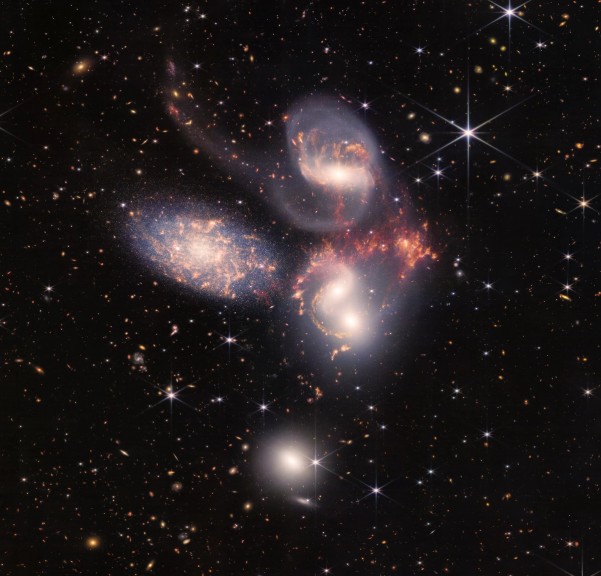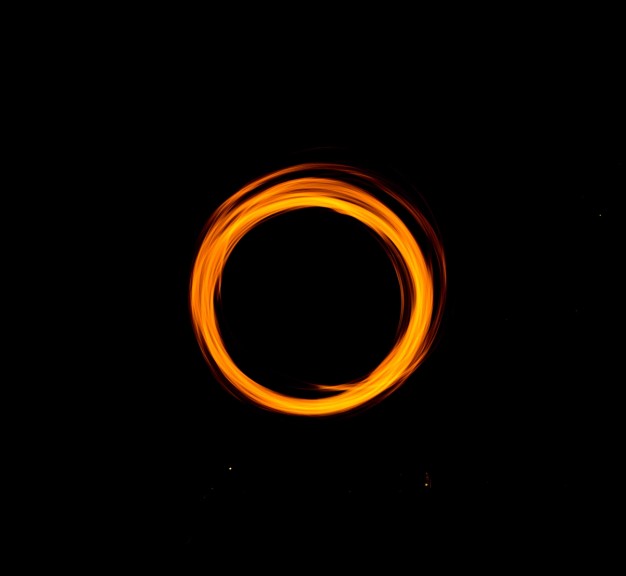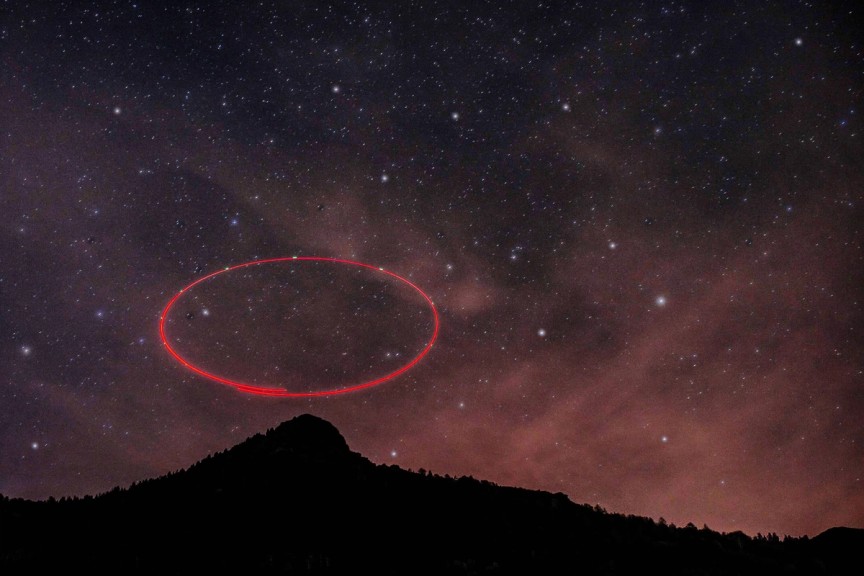6.1 Euler’s product equals zeta function
We’ve found interesting patterns so far on our journey. Remember the harmonic series? We identified that series summed to infinity. But we modified it to create other interesting series that did converge to a number. We’ve also expanded from addition to multiplication and took a peek at prime numbers and some interesting features hidden in the primes.
Lazarus Math is about trying new things and fanning our imagination. In doing so, we’ve found surprising connections between ideas that did not seem to be related. From our basic math, we know addition and multiplication are related. For example, illustrates that we can view multiplication as repeated addition. There are other ways addition and multiplication are related. In this section, we will explore another connection between these two operations that is at a more foundational level and one that is quite surprising.
Recall the foundation for multiplication are the prime numbers. This is because we can produce any integer greater than 1 by multiplying some combination of prime numbers. Thus, if we have a building of positive integers, we have the prime numbers as the first floor and the composite numbers as the second floor. We also have the multiplicative identity 1 as a special case. The only way to produce a prime number using multiplication of positive integers is by using the prime number itself and 1.
For addition, we don’t have this two-level perspective of the positive integers. We don’t have a prime number and a composite number for addition. Thus, if we have all the positive integers built by addition, we would think of it as only one floor, a floor that contains all the positive integers.
So, let’s take the infinite set of positive integers and use addition and compare it to the infinite set of prime numbers while using multiplication. Is there any connection between these two sets of numbers and the operation that goes with the set?
It seems like a rather wild idea. If we were tasked with the responsibility of finding a connection, where would we even begin? It seems like we may have a chance of finding a connection if we had some finite set, but how could we find a connection when both sets are infinite?
Adjusting the harmonic series
For addition, let’s start with a series we know, the harmonic series. Recall the harmonic series assigned the positive integers to the denominator and then added this infinite series. The harmonics series, with the first five terms written out, is
Even though the terms after the first few are quite small, the infinite series did not converge to a number but rather trailed off to the black hole of infinity.
We want to create an expression involving adding integers to equal an expression involving multiplying primes. It would be more interesting if these two expressions equaled some finite number. That means we want our infinite sum to converge. One way we can do this is to square each term. The first term is 1, so squaring 1 still produces 1. The second term, , becomes , then becomes , etc. If we square a positive number less than 1, the result is a smaller number. Thus, we are decreasing every term except the first, which doesn’t change. By squaring each term in the harmonic series, we define a new infinite sum.
Our immediate question is whether we accomplished our goal and this new sum equals some number. The answer is yes, it does converge to a specific number, but what is that number? To get a rough estimate, Figure 1 is a stairstep graph of the sum for the first 11 terms.
Figure 1. First 11 terms of the infinite sum
The 10th term is 0.01 and the 11th term is approximately 0.00826446281, so the terms are becoming small. The sum of the first 11 terms is approximately 1.558032194. It appears the number the infinite sum converges to is not a large number. Before we determine the exact answer to this infinite sum, we know the result is greater than 1.55. With that fact, let’s build an infinite product by using the prime numbers.

Infinite product
For the infinite sum, we started with the harmonic series and made a small change. How should we build an infinite product with the prime numbers? Like we did with the infinite sum, it seems like a good start is to assign the prime numbers to the denominator. This is a good start, but the next steps are quite uncertain. I can’t find an intuitive way to create the infinite product if I was starting from scratch, so I will just explain it.
We’ll choose the prime number 5 as an example, and then we will generalize to all prime numbers. First, write a fraction with the prime in the denominator. This produces . Multiply this fraction by itself, which is the same as squaring it, to get . Now, subtract this from 1 to create . Notice this result is slightly less than 1. The result would be less than one for any prime that we choose. If the prime is 11, then the expression is . The goal is to multiply each of these factors together. If each factor is less than 1, then the product will also be less than 1. In other words, if we multiply a series of numbers that are all between 0 and 1, the result will be between 0 and 1. We noted above that the sum of our infinite series is greater than 1.55. So to have a chance to equal the infinite sum which is greater than 1, we need one more change.
Take this result and create another fraction by writing it as the denominator. Thus, after the juggling is complete, our factor for the prime 5 is . If we calculate the result, we get approximately 1.041666667. It’s worth observing what occurs as we increase the prime number. The next prime number after 5 is 7, and applying this process to 7 produces . This result is slightly smaller than the result for 5. Likewise, the approximate result for the next prime number 11 is approximately 1.008333333.
Clearly, the result for each prime number is slightly smaller than the previous prime number. A key observation, though, is the result will always be greater than 1. That is because if we divide 1 by a large prime, the result is a number slightly greater than 0. If we square that number it is a smaller number but still positive. Then, subtracting the number from 1 produces a number slightly less than 1. The final step is to put this result in the denominator, which gives a number that is slightly greater than 1. That means as we continue to multiply our result by the next prime number factor, we are multiplying by a number slightly greater than 1 which will increase the result.
Here are the first 3 terms of our infinite product:
The first term is approximately 1.333333333. The product of the first two terms is 1.50. Then the change to the product by including the remaining terms is relatively small. The product of the first 3 terms is 1.5625. Figure 2 is a graph of the product through the prime 11, which is approximately 1.608344184.
Figure 2. Infinite product of primes
If we jump to the first 11 primes, which includes 31, the result is approximately 1.635070658. The result is increasing, but certainly at a slow pace. Of course, the result seems to be an uninteresting number. But it does appear that if we include the infinite set of prime numbers, the result may converge to some number. Will the result ever reach 1.75, or even 2?
Sum meets product
The sum using positive integers and the product using prime numbers are interesting patterns to consider individually. But our goal is to determine if they are related. So let’s compare the two using a finite number of terms. Recall the sum using the first 11 integers is approximately 1.558032194. The product using primes through 11 is approximately 1.608344184. If we include the first 11 prime numbers through 31, the approximate result is 1.635070658, which is even larger.
As a side note, this highlights the interesting dilemma regarding an infinite set. If we want to compare the 2 sets for a finite number, such as the number 11, it is clear from the finite sum that we would choose the first 11 terms, which includes 1 through 11. But what do we choose for the finite product? Do we choose up to the integer 11, which includes the first 5 prime numbers? Or, do we choose the first 11 prime numbers which jumps to 31? We can already see that these are two very different sets, even though we say they are both infinite. It feels like we are comparing apples to oranges. Both are interesting by themselves, but comparing the two feels “awkward.”
Regardless of how we choose to compare them, the sum and the product are reasonably close to each other. But it would certainly be amazing if they result in the same number when we include the entire infinite set for both. Our bottom-line question is how do these compare when we let the sum include all the positive integers and the product include all the prime numbers?
The amazing result is that not only do both converge to a number, but they converge to the same number. Is that unbelievable? How does this occur? There are so many questions that surface. Perhaps it isn’t too surprising the infinite product of prime numbers converges to a number, but how do we know what the infinite product of prime numbers actually converges to? Because we are finite, we are not capable of listing the infinite set of positive integers. But we know their pattern. The next integer is simply the previous integer plus 1.
The prime numbers are a different animal. Not only can we not list the prime numbers because they are infinite in number, we don’t even know the entire set of prime numbers nor do we have a way of creating the set of prime numbers. In our prime number hunt, we have certainly made progress. Remember the largest known prime as of January 2020 is . If the set of prime numbers is infinite, which it is, then this seemingly massive number is just the beginning.
How can we know the product when we don’t even know what “most” of the numbers are? Also, wouldn’t this give the impression that the infinite set of prime numbers is somehow “complete” or “ordered?” Even though the set of prime numbers seems random, if we remove even one prime number, then we do not get the amazing result that our infinite sum equals our infinite product. Isn’t it fascinating that an infinite set of seemingly random numbers can form a complete set? How do we know that this is true? What person would have thought of this and how did they come to this conclusion?
It’s interesting to take a big step back and think about all the things in this world we cannot agree on. Even within my own family, rarely is there complete agreement about a certain topic. Yet, this seemingly crazy idea that these two expressions equal each other is one idea that math people from all cultures and different eras all agree on. I’m sure if you thought about this for a while, equating these two expressions raises more questions than it answers. There is a mystery here as to how all this works. Wouldn’t it be neat to uncover and understand this mystery?
There is actually more to this story. As we continue this drama, we will answer some of the questions we just posed. Let’s return to the math to see what treasures remain to be seen. We can write this as a formula using the usual 3 dots to indicate a continuation of the pattern.
As you could imagine, this result was a shock to the math community. Of course, if these two results equal each other, they must equal some number. What is that number? What number could possibly be what connects these two infinite processes? Is it some round number like 2? Is it a rational number like ?
The number is an irrational number. However, it is not just any irrational number. Perhaps the most surprising part of this story is what these two expressions equal. The infinite sum and the infinite product both converge to the number . That means we now have 3 things that equal each other.
Now that we know the specific number, even more questions come to mind. One likely question is: Why does appear? Since has appeared often in Lazarus Math, perhaps you are not surprised. But really, where is the circle here since a circle is hiding somewhere whenever appears. And why is it ?
Yes, is some strange, seemingly random number. However, at least it is something we can relate to because it’s the distance around a circle divided by the distance across. But what is ? Why would that number ever exist as part of a solution and what does it represent? Even if you take a circle and increase the dimension to a sphere, there isn’t a to be found. The volume for a sphere is , so the radius increases dimensions, but has already performed its magic and doesn’t need to change as our objects increase dimensions.
If you find your mind spinning, remember this is not a fast food meal of math. Most of Lazarus Math requires time to digest and appreciate. Take some time to think about these ideas and don’t be in a hurry. Some of the questions we’re asking do not have known answers. They remain a mystery. We won’t answer all our questions, but we can still gain insight by digging some more.
Let’s consider how these two infinite series move together. Figure 3 is a graph of both series through the integer 11. The limit is also displayed to give a visual as to how close each series is moving to “the finish line.” Remember squaring is common in both expressions—the integer is squared in the sum and the prime number is squared in the product. This detail will become important later.
Figure 3. Infinite sum and infinite product
Clearly, the product series converges to faster than the sum series, but they both converge to the same remarkable result. There are many amazing results in math. However, my mind is not capable of comprehending the reasons for some of these results. Fortunately, this is not one of them. As you can imagine, the explanation for why both expressions converge to requires dedicated time but is remarkable and worth the effort. So I’m delaying the explanation to the next section where we can give the story the space it deserves. But we are not done with this section. This story is not yet complete as there are more connections that we can make.
Cleanup
We mentioned that both expressions have a squaring action so first, let’s simplify our expression by leveraging math notation. You may recall that we can write as . In other words, we can move the denominator to the numerator by raising it to the power of . Let’s do that for both our infinite addition and infinite multiplication.
In general, the infinite addition changes to , where is a positive integer. Likewise, in general, we can rewrite each term in our infinite multiplication as , where is a prime number. That means we can write:
The sum of for all positive integers equals the product of for all primes , and they both equal . Here is the same thing but written as a formula.
We can consolidate this even more by using special notation for a sum and product.
The first symbol, , sums each term by using all the integers as input starting from up to infinity. The second symbol, , multiplies each term by using the prime numbers as input starting from up to infinity.
There is a lot packed into these two expressions, and they can be intimidating. Hopefully, we have slowly developed the concepts so the fancy notation is clear. Math can appear more difficult than it is because of its concise notation. However, once you understand the notation, it can be a beautiful thing to consolidate a lot of ideas into such a small space. I think one key to understanding math is to start with the context and end with the notation. But I’m digressing.
Both the infinite sum and infinite product expressions are a big deal. Most big deals in math get their own name.
Names
The name for the infinite sum is the zeta function. It is usually called the Riemann zeta function after the famous mathematician Bernhard Riemann. We will learn more about Mr. Riemann later. Some math ideas are big enough that we not only give them a name, we want to make them a family. Sometimes, this is referred to as the Riemann zeta family.
We’ve actually already met a member of the Riemann zeta family. The harmonic series is the “basic” member of the Riemann zeta family. The new series we defined by squaring each term in the harmonic series can be considered the second member of the Riemann zeta family. Notice these two series are the same except for the exponent.
We didn’t write an exponent in the harmonic series, but that doesn’t mean it doesn’t have an exponent. All numbers have exponents, but if we don’t write an exponent, we assume the exponent is 1.
Meeting the zeta family
Notice the only difference between the harmonic series and our new series is the harmonic series has exponent 1 and our new series has exponent 2. This is how members of the Riemann zeta family are related. They are all the same except we change the exponent. Since we change the exponent, we need to make the exponent a variable. Because it is a family, we want to be formal, so we even specify the variable . Of course, there is nothing special about using , but it is the common choice.
Now we are ready to give a complete description of the zeta family. The zeta family includes all infinite sums of for all positive integers . We can use our fancy notation to be even more concise.
Isn’t it amazing how we can pack so much information into such a small space? Now that we have defined our family, we can populate its members faster than rabbits populate. For example, simply let and, poof, another child has entered the Riemann zeta family. This member looks similar to the first two except we change the exponent to 3.
Good. Wasn’t it fun watching a math family grow?
Euler prime product family
Let’s leave the Riemann zeta family alone for a while and continue to populate the math world by reproducing new members for our infinite product. First, we need the family name. This infinite product is often called the Euler Prime Product, after Leonhard Euler, as you may have guessed. As with the zeta function, we create this family by making the exponent a variable rather than a specific number. As a result, the family of the Euler Prime Product using the same variable becomes:
Using our consolidated notation, we can write:
Now that we’re thinking about families, remember our big moment was when we took a member of the Riemann zeta function family, where , and we matched it with a member of the Euler product family, also for . The two were a perfect match, and they equaled . Do you suppose we can perform the same matchmaking exercise for a different between the two families?
Royal families meet
For example, if we introduced the member of the zeta family to the member of the Euler product family, would they get along? Well, they not only get along but are once again a perfect match and equal to each other. Are you not surprised?
If they equal each other, we expect they will equal the same number. What is this number both expressions equal (you were going to ask that question by now, I trust)?
If , both expressions equal . Perhaps you were not surprised appeared again. We just expect cool math and to appear, although this is the first time showed up in Lazarus Math decorated with the exponent 4. Figure 4 is a graph for both infinite series as well as the limit at .
Figure 4. Comparing two different infinite series
Again, the product series converges faster than the sum series but only slightly. Both are near the limit of by the third term.
Perhaps you’re wondering about the other members of the zeta family and the Euler product family for other values. Do they all equal each other? Yes, but with a disclaimer. By “all,” we’re referring to the positive integers, right?
Well, if , both expressions are considered “undefined” because the sum of both infinite series when is infinity. Thus, we can say they are both undefined at . But when both infinite series converge, then yes, they are equal. Are we referring to the positive integers greater than 1? No, we’re referring to all real numbers . In other words, these two families equal each other for and , etc.
This is our amazing conclusion:
Let’s finish by reviewing the graph for . Here are the two series through the first 11 terms.
Figure 5. Comparing when s=1.1
Unlike for and , this converges to a number that isn’t as pristine. Clearly, we have more work to do as the infinite sum is significantly behind the infinite product. We should anticipate it would require more terms for the two expressions to be “close” since it required fewer terms for the expressions to be “close” when we went from to .
When we include an infinite set of inputs, each expression converges to a number just greater than 10.5. Again, the exact number is not important. Here is a zoomed-in version of the results between the primes 43 and 47.
Figure 6. Comparing s=1.1 in detail
There remains a significant distance between the two series. It doesn’t appear the infinite sum is making much progress. However, both are between 3.5 and 5.5, so they still have a way to go before they converge at just above 10.5.
Rich family history
These two families have a rich history in math. Euler did his work in the 18th century, and Riemann did his work in the 19th century. Even though the zeta family bears Riemann’s name, Euler was the one who identified the infinite sum equals when and the infinite sum equals when . You may wonder how Euler derived these results. The first result was a major shock to the math community. It even has a special name: the Basel problem. Euler identified this result in 1735 even though the methods he used were not justified at the time. As often was the case, his methods were proven correct later. There are many interesting stories regarding the details of this formula. Grant from 3Blue1Brown has created a wonderful video that highlights the interesting development of this formula.
You may wonder why the zeta family bears Riemann’s name rather than Euler’s. Even though Euler made remarkable discoveries with this formula, Euler only used positive integers as input. This may have seemed like the only valid option and that is what many math people, including Euler, thought. That is where this story takes a fascinating turn—when Riemann expanded the input and produced some of the most important results in all of math. The work performed on the zeta function primarily by Euler and Riemann is amazing. Euler uncovered amazing results that fascinated his peers. Then Riemann receives the baton and takes this function to a whole new level, a level we today are still trying to climb to. We will uncover some of this story in the “Inhabit 3: A new dimension” section.
But before we jump to the work of Riemann, we want to invest time to prove how the zeta family is related to the prime product family.















